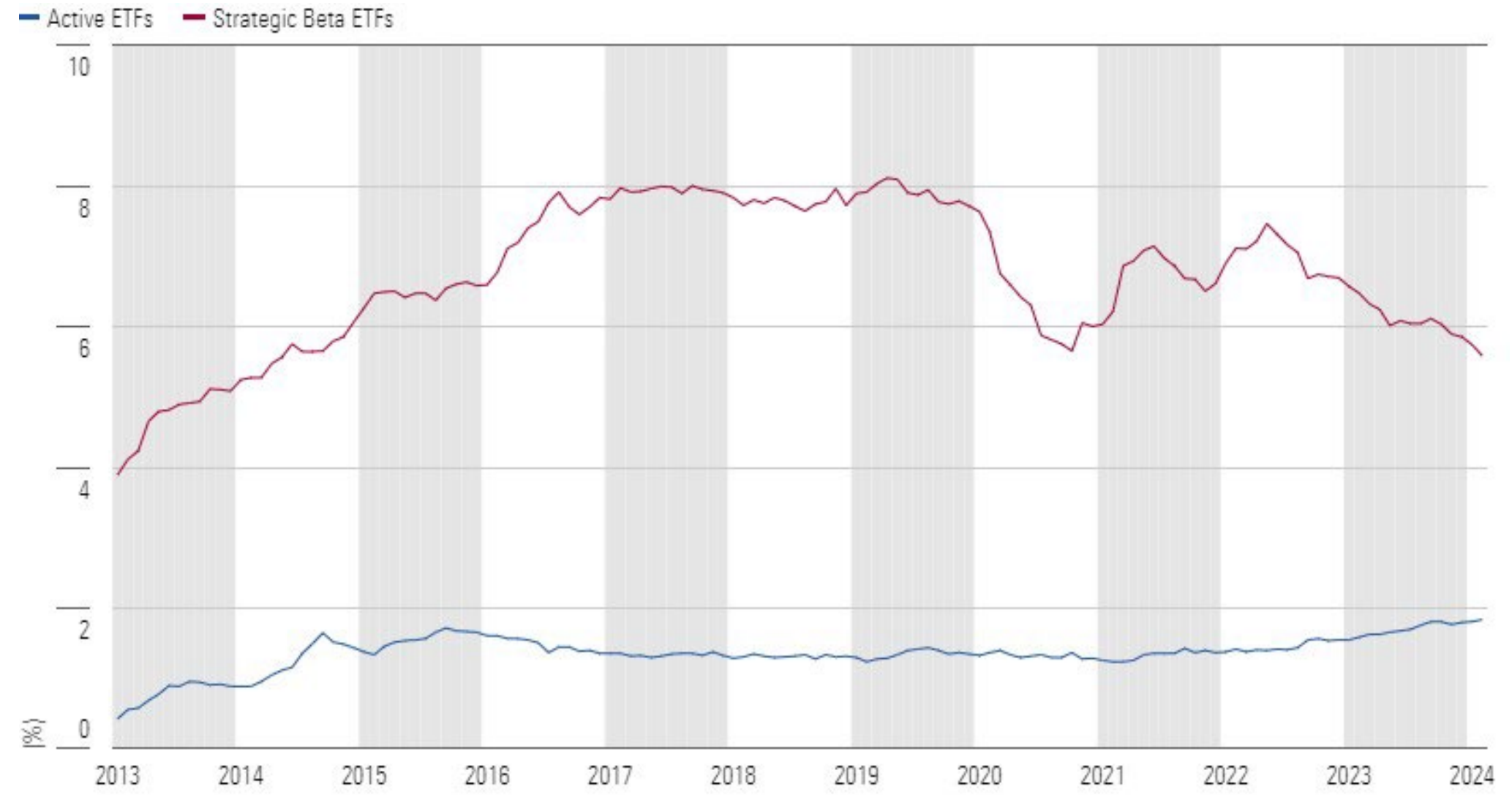The rise of active ETFs in Europe has sparked questions about the role of smart beta within multi-asset portfolios, an asset class that has struggled to gain traction over the past decade.
Active investing is the latest trend to take the European ETF market by storm as investors pile into quantitative-driven ETFs from the likes of JP Morgan Asset Management (JPMAM) and Fidelity International.
According to data from Morningstar, active ETFs saw €2.1bn inflows in Q1, taking the segment’s overall assets under management (AUM) to €33.6bn, up from €5.7bn at the start of 2015.
Last quarter was a different story for smart beta ETFs which suffered €1.5bn outflows as investors turned away from value and risk-orientated products.
The asset class has never exceeded 8% market share of European ETFs, a sign it has “reached its potential”, according to Monika Calay, director, manager research, at Morningstar.
Chart 1: Smart beta and active ETFs' market share of the overall ETF market (%) in Europe

Source: Morningstar
Smart beta ETFs that offer exposure to factors such as value, size or low volatility have often left investors disappointed due to their high correlation with their parent benchmarks and higher fees.
According to analysis conducted by Finominal, many smart beta ETFs have a correlation of more than 0.9 to the S&P 500, highlighting the potential construction challenges of creating a long-only factor exposure.
In response, active ETFs have launched with the promise of incremental outperformance via a quantitative-driven approach to stock selection.
These strategies have resonated the most with investors as highlighted by the JPM US Research Enhanced Index Equity (ESG) UCITS ETF (JREU) which has ballooned to $7.1bn AUM since launching in October 2018, the largest active ETF in Europe.
“In Europe, the active ETF landscape is biased toward lower-alpha, lower-active share products, as well as quantitative and sustainability-tilted products, in both equities and fixed income,” Calay explained.
“Given that an increasing number of active managers are considering the merits of packaging and distributing their investment strategies in an ETF format, we expect the menu of available options to expand significantly as new entrants join the race.”
Calay said switching from a smart beta to an active approach allows flexibility to navigate changing market environments and “exploit pockets of value” that are not captured in a rules-based approach.
One example of this came in late in 2020 after Pfizer announced positive vaccine results, a move that drove outperformance in value stocks. However, BlackRock’s momentum ETFs were unable to capture this switch from growth to value until May 2021 when the underlying index rebalanced.
Furthermore, JPMAM converted its multi-factor high yield bond ETF into an actively managed strategy in August 2023 to allow it to respond to “liquidity and market events outside of the monthly index rebalance schedule”.
“High yield is one of the areas of the bond market where active managers have more latitude to add value relative to a passive approach – for example, by exploring the less liquid areas of the market typically ignored by benchmarks,” Calay continued.
“The switch allowed JPMAM to market the strategy by selling the expertise of its team of high-yield bond managers and the additional value they could bring to the fund.”
Final word
While the difference between rules-based smart beta and quantitative-driven active ETFs is relatively small, investors have been more attracted to the latter which is driving innovation in ETFs and the promise of outperformance.







